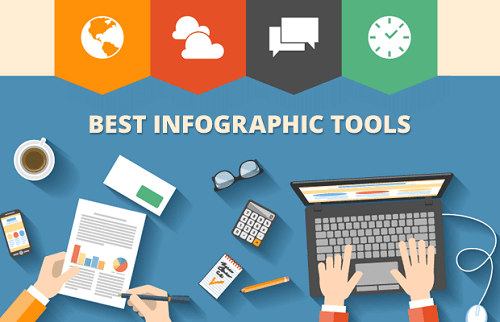Why Infographics Are Better than Word-Intensive Content
The term infographics is a fusion of two words (information + graphics) that represent the best way of getting a message across. If that is correct, it stands to reason that an infographic on its own is the holy grail of the different modes of communication. That is, having good infographics coupled with well-written content is a surefire recipe for SEOs to get a website ranking. Before we get carried away, let’s expand on what an infographic is, along with the different types of infographics you can find in the marketing industry.

What is an infographic?
Visualize a presentation, now in that setting, you will be hard-pressed find a one without the use of infographic images. An info graphic is a visual illustration of information so that it can be digestible for the audience. Good infographics compress complex numeric and textual data into easy to understand visual representations that include pictures and videos. SEO and digital marketers use infographics primarily to capture and retain the viewer’s attention. While the human brain might recall information at different speeds for each individual, our minds have a higher propensity to recall videos and images much faster than a comprehensive text.
Types of infographics Online
Here’s a list of different types of SEO infographics:
- Comparison
- Geographic
- Hierarchical
- How to Guides
- Informational
- List
- Process
- Statistical
- Timeline
- Resume
The Difference between Infographics & Text Content
There really isn’t much difference between the two since both methods are relaying the same content. The distinction lies in the representation of the content. While both are informative modes of conveying a message across, their styles are different. Here’s the difference:
- Infographics are visual content pieces (this includes video infographics).
- More pictures and fewer words.
- Textual content relays a message in a much more descript and comprehensive format.
- More explanatory, word-intensive and number-based content.
What does Google say about SEO Infographics?
Google PageRank works in mysterious ways, however, there’s a well-established understanding among online marketers that recognizes that images have a separate ranking criterion. Google uses Web Spiders to crawl an indexed page and there’re different algorithms for each ranking criterion. Each criterion includes analyzing keywords, domain age, content, length, title tag, header tags and other factors.
Info graphics also play a huge role in SERPS rank checker crawl. When the spiders come across a link, they then follow the link and indexes that page. Your site might not rank number one for a certain keyword, but your infographic may be first on the images search results.
How to Create Infographics Online
Creating an interactive infographic is not rocket science. There’re plenty of infographic software sites that provide a comprehensive tutorial on how to make an infographic. They also offer free infographic templates available for download. Our recommended site is Canva. The infographic tool gives users options to choose which images they want to create from a long list. Try it out, it should be a useful tool for digital marketers to gain.

Benefits of Using more targeted infographic Images
We look at the 8 infographic SEO benefits that should form part of your web-based marketing techniques:
- An effective method of conveying complex data in a way that is easier to digest.
- Data infographics use charts and graphs to explain the numbers visually.
- Screenshots with explanation and examples of what to do, how to use it, how to interpret that information, these types of infographics have huge value.
- Infographics are a useful tool to build links on a page.
- They are great anchor texts acting as linkable in the content on the page.
- Perfect for social media platforms.
- Another vehicle to fit in keywords with high search volume.
- They can expand beyond digital marketing, meaning that you can take the content to make infographic posters and pamphlets offline.
Success Rate of Infographics
Having expanded at length on the ability to capture the attention of the user much quicker than a great caption, infographics have a much higher success rate than written content. Here’s a list of markers that indicate the success rate of using images on a webpage:
- Creative infographics retain the user’s attention span much longer than text content, which, in turn, reduces bounce rate.
- They improve the conversion rate of the searched keyword when the link building is done well.
- By extension, it improves the exit rate of the web page.
- When optimized properly, infographics can be used as a great vehicle to direct traffic from several platforms to the website.
SEO Infographic Overview
Most of the websites that use marketing infographics maintain a high ranking on search engine results. If you are looking to learn how to create infographics online, head over to Canva for a quick tutorial. Images have also been known to expand a webpage’s reach, with platforms such as Pinterest, Tumbler and many other platforms being hosts of killer infographics. For a more visually comprehensive guide on using infographics, download our Infographics Presentation guide. Leave a comment below for more discussions around the appeal of infographics.


